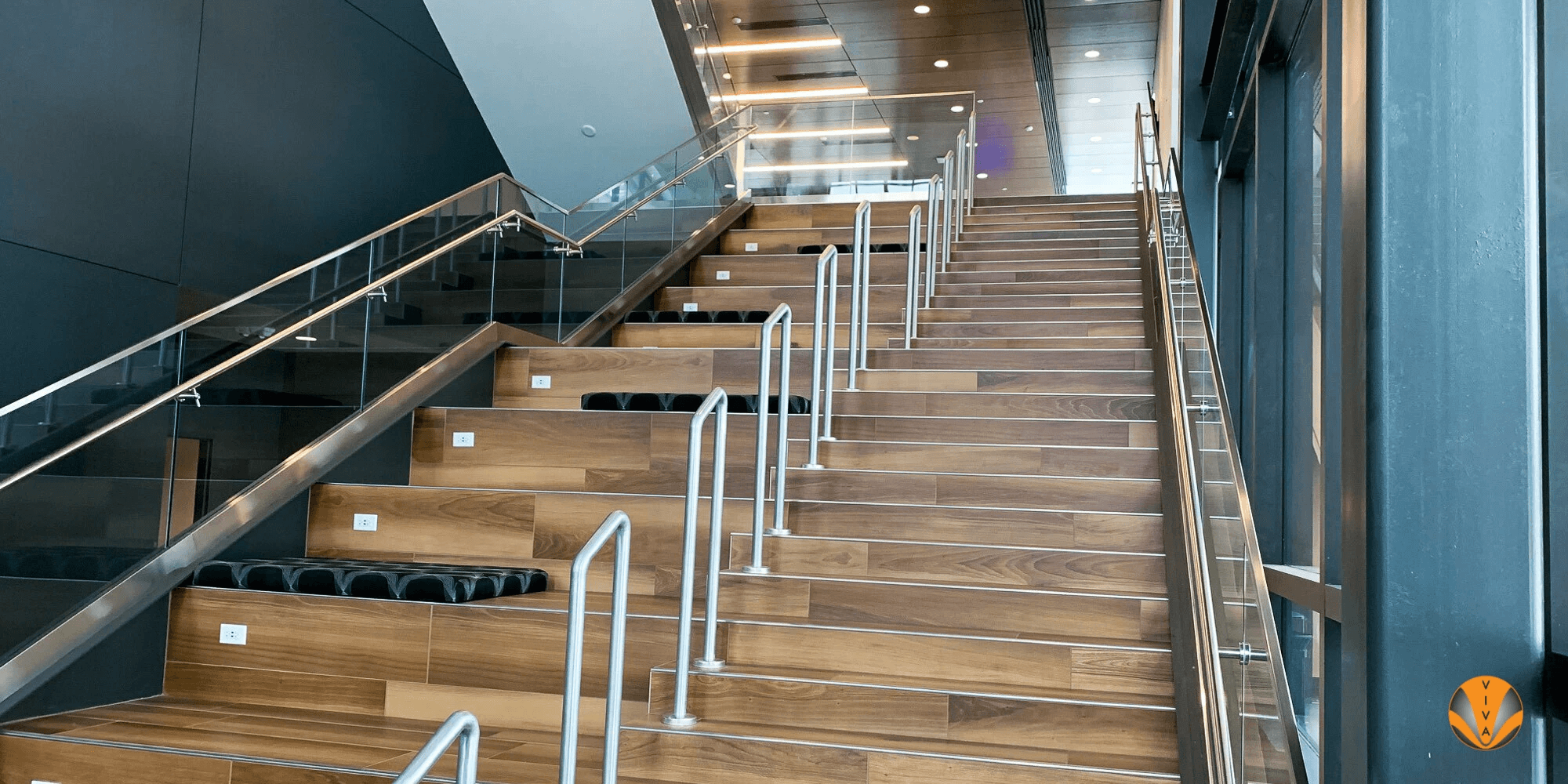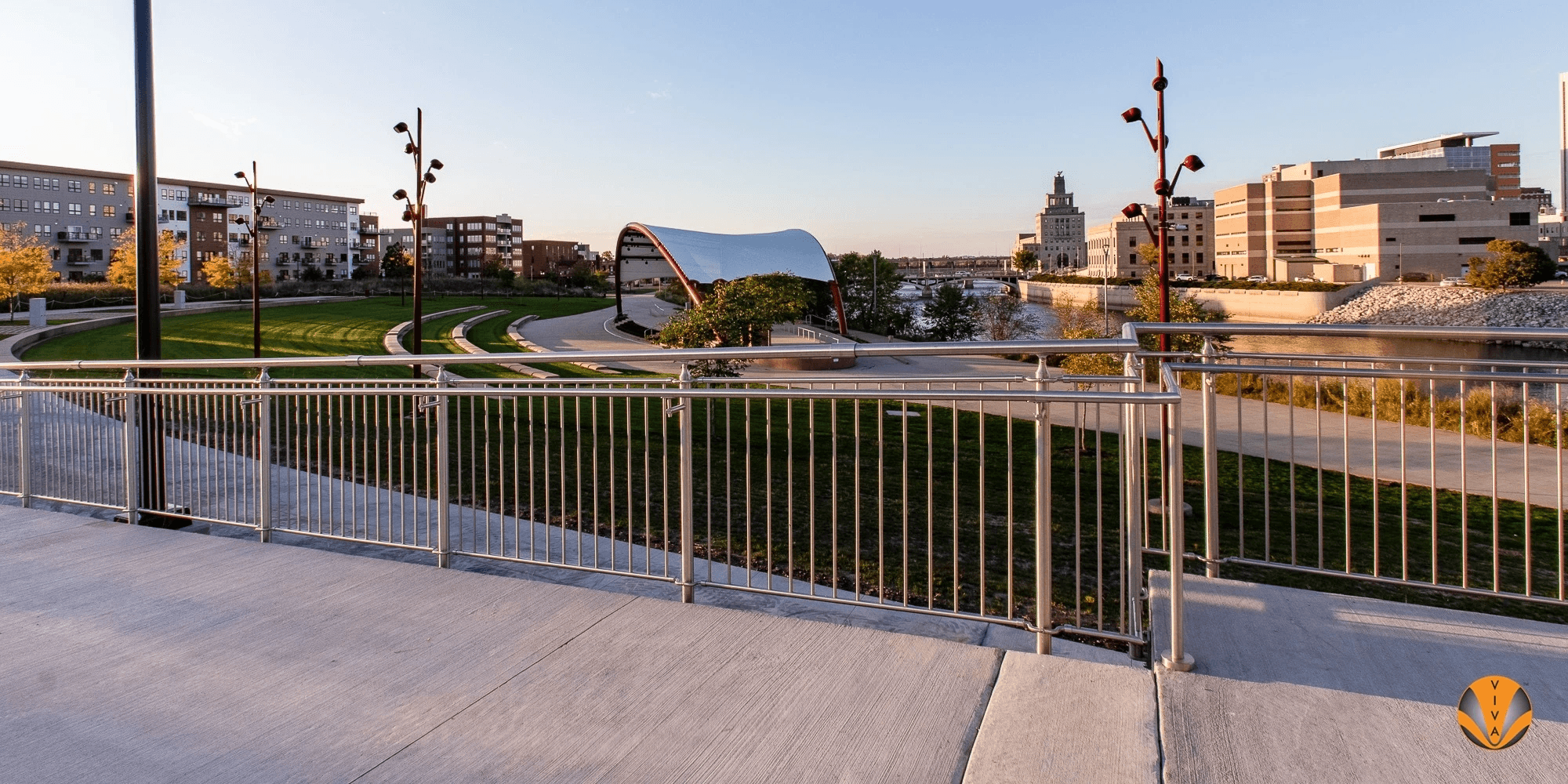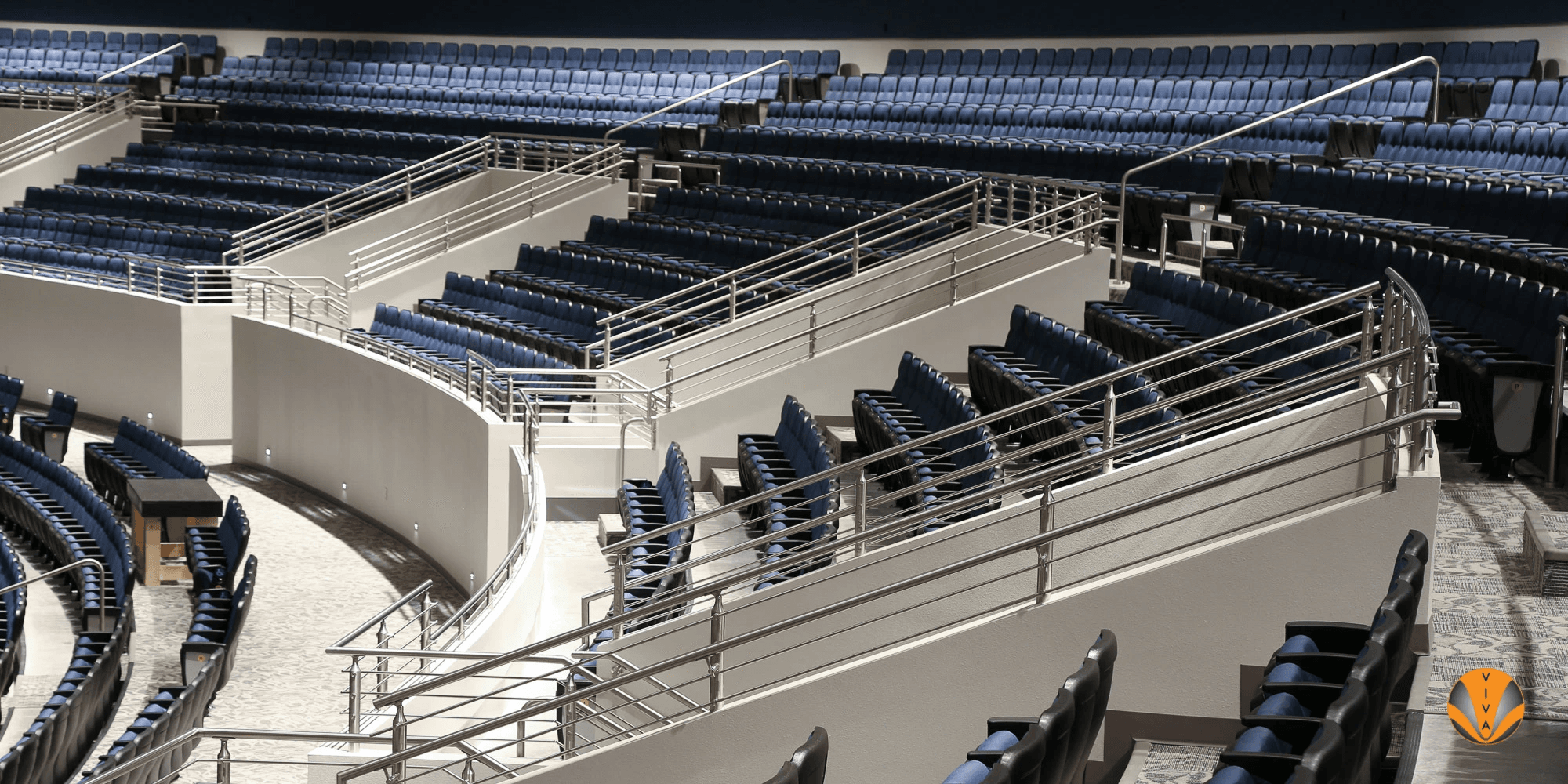Theatres continually welcome a range of guests of all ages and abilities. This means that they must be built to standards that allow everyone to use them as easily as possible. Handrails are required on stairs and may be positioned on the outer edge of the stairs or in the center of a stairway to allow access to seating on both sides of the stairs. There are a number of different factors to take into consideration when looking into theater handrails, including the location, whether or not it needs to be illuminated, the type of infill, handrails, aesthetics, and color.
Let’s take a closer look at these factors and some theater handrail design ideas.
Theater Handrail Considerations
Location
To determine the best theatre handrails, it’s essential to consider their location. Theater handrails may be used in interior or exterior spaces depending on the needs of the theater and the location of the theatre itself. Open air amphitheatres may have different needs than traditional indoor theatres, and these locational needs should be considered when making the final handrail determinations.
Illumination
Depending on the needs of the space, lighted handrails can offer increased visibility that allows theater patrons to find their seats safely. VIVA offers three LED illuminated railing options — iRAIL™ Linear, iRAIL™ Pods, and iRAIL™ Capsule — and the choice of warm or bright light with either a clear or diffused lens.
Infill
Choosing the right infill for theater handrails can make a huge difference in the theater experience, onstage and off. One of the main goals of theater handrails is to create the necessary safety without obscuring the view to or from the stage. Cable, picket, and glass infills are ideal for theater handrails because they won’t block the view. Where an infill isn’t needed or required, the FSR™ Free Standing Rail System is an excellent choice.
Handrails
Depending on the location of the railing system, its distance from the ground, and its uses, a handrail may or may not be necessary. Where a guard is required, a top rail is all that’s necessary, but on stairs and ramps, a handrail is likely needed in addition to the top rail.
Aesthetics
Increasingly, spaces are designed to be as aesthetically pleasing as they are functional.
Designing a theater is about the entire experience. From the time the guests walk in the door until the time they leave, they should be immersed in the experience, and good design can help. Choosing a railing system that meets the safety needs of the space, while also enhancing the aesthetics is key to creating the ideal theater.
Color
VIVA Railings offers both ECM and powder coating for our railing systems, so the railings can blend in or stand out effortlessly. You can choose from our standard color options or create a customized color that will complete your theater design.





